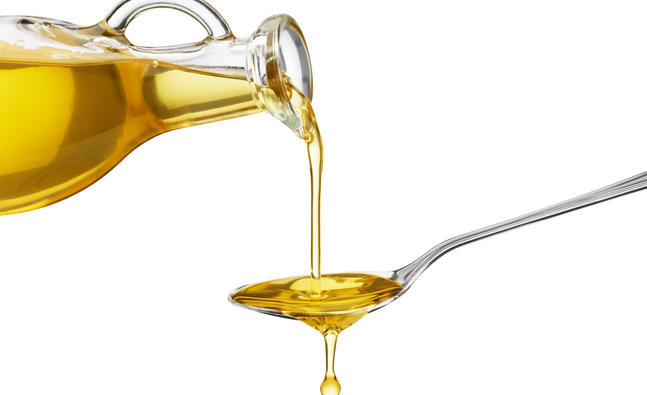A Girl’s Guide to Using Protein Powder
What's the first image that comes to mind when you think of protein powder? Probably a jacked guy making a post-workout shake, right? It's time we rehab protein powder's image.
“Women may actually benefit more from protein powder than men do,” says certified strength and conditioning specialist Marie Spano, R.D. “Men who are involved in a general fitness program typically have enough protein in their diet, whereas many women fall short. Protein powder can help fill in the gaps.”
After all, while the Centers for Disease Control and Prevention recommends that the average woman consume about 46 grams of protein per day, experts believe that women who are active or trying to lose weight may need even more to keep their muscles strong and their metabolisms revved. For instance, the Academy of Nutrition and Dietetics as well as the American College of Sports Medicine recommend that athletes consume between 1.2 to 1.7 grams of protein per kilogram body weight per day. For a 140-pound woman, that would be between 76 and 108 grams of protein per day.
When you’re strapped for time, eating on the run, or trying to cut down on your meat habit, getting that much protein can be challenging. That’s where protein powder comes in. Mixing it into a shake or smoothie can help you hit you protein goals wherever you go. Meanwhile, sprinkling some powder in your pancake batter or soups or putting some on top of your oatmeal can also help make every meal and snack into high-protein one.
“When cutting calories, a female actually needs more protein than if she is consuming enough calories to maintain her weight,” says Spano. “Weight loss includes fat, muscle, and a tiny bit of bone. Of course you want to lose more fat and less muscle. To do this, you’ll need to increase the amount of protein you consume to spare muscle-tissue losses.”
RELATED: 5 Signs You Should Be Eating More Protein
Plus, getting some of your daily protein in powder form can save you tons of calories. It turns out, protein powder is the lowest-cal way out there to get your protein. That’s because protein powders contain little if any grams of fat or carbohydrates, so all of their calories come from protein, says Fear. Expect to put away just four calories per gram. That’s something not even your super-lean chicken breast can claim.
Meanwhile, when you’re hitting it hard at the gym, protein powder is can take your results from “meh” to “wow.” Sipping on a protein smoothie after your workout scores you the mixture of protein, carbs, and vitamins you need to build lean muscle and become stronger, faster, and fitter, says board-certified sports dietitian Georgie Fear, R.D., author of Lean Habits for Lifelong Weight Loss.
SHAKE THIS WAY
One of the most common (and useful) ways to consume protein powder is to mix it into pre- and post-workout shakes and smoothies, says Fear. “For before training, protein powder in a shake can make for an easy-to-digest meal that won’t sit too heavy in the stomach. But you might want to keep the volume on the lower end since a 32-ounce blender full might be hard to keep down during burpees. For post-workout, combining whey protein with some potassium-rich fruit like bananas or strawberries in your smoothie helps with recovery.”
After a tough workout, Fear recommends consuming a mixture of carbs and protein—aim for at least 15 grams of protein. “If you’re hungrier, no harm in eating more protein," she says. "It will help with managing your post-exercise appetite."
RELATED: How to Load Up on Protein to Lose Weight
Meanwhile, if your smoothie is a stand-in for a full-fledged meal, she advises shooting for getting between 25 to 30 grams of protein in your glass. “Most brands of whey protein, the most popular kind out there, come with a scoop that typically measures out an ounce of powder and provides 20 to 25 grams of protein. If you mix it with milk, kefir, or yogurt, you’ll get some additional protein there.” She notes that adding in some nuts, nut betters, flax, hemp, or chia seeds can add healthy fats to your meal to help keep you full for a full four to six hours, while mixing in some veggies and fruits (take it easy on the fruits or you could wind up OD-ing on sugar and calories), will help you hit your carbohydrate, vitamin, and mineral needs.
WHAT KIND OF PROTEIN DO YOU NEED?
Before you get sucked into the whole whey/casein/soy/pea/rice/hemp debate, don’t. “Whey, which comes from cow’s milk, has been shown to be more effective in stimulating muscle protein synthesis, it’s affordable, and in my opinion tastes the best," says Fear. "So I recommend whey protein unless a client has a reason not to use it."
The two possible reasons would be that you plan to use the protein powder as a meal replacement (and not before/after exercise) and that you’re vegan—in which case we recommend Essential Living Foods Organic Vegan Protein Supplement Powder ($39.95, rodales.com) or Sprout Living Organic Epic Protein Powder - Green Kingdom ($30, rodales.com) from our parent company's e-tail site. Casein, which also comes from cow’s milk and, like whey, contains all of the amino acids your body needs, is digested more slowly than is whey (meaning it can help keep you full longer), says Eileen Weinheimer-Haus, Ph.D., R.D., scientific affairs manager with Glanbia Performance Nutrition. Meanwhile, if you’re vegan, soy is a great post-workout option since it’s rapidly digested, getting amino acids where they need to be ASAP. Also, unlike other plant sources like rice, hemp, and pea, soy contains all of the essential amino acids.
RELATED: How Long Should It Take to See Muscle Definition?
If you’re lactose intolerant, simply opting for a whey protein isolate over whey protein concentrate will cut down on, if not eliminate, any stomach upset or gas, says Fear.
Whatever type of protein you choose, reading the back label is your most important move. Fear recommends looking for a protein powder that contains less than five grams of carbs and two grams of fat per serving. It should also list protein as the first ingredient, says Weinheimer-Haus. She advises avoiding any tubs that list “added amino acids” among their ingredients. “These amino acids can be much cheaper than a whole protein, such as whey, and may not offer the same benefits,” she says. Other fillers to avoid include wheat grass, apple fiber, maltodextrin, or cellulose. They generally are used as inexpensive bulking agents and just take away from the protein you really want, says Fear.
Ready to boost your protein intake to build more muscle and blast more fat? Start with these four awesome protein shakes.
-
10 SIMPLE THINGS THAT YOU CAN DO THROUGHOUT THE DAY TO LOSE WEIGHT
10 Simple things that you can do throughout the day to lose weight
-
Reduce weight gain by serving healthy foods
-
Identifying overeating triggers
-
Texting your way to weight loss
-
Chicken and quinoa soup is great for weight loss
-
Rev up your metabolism over winter breakfast
- DON'T MISS
- Hula hoop your way to weight loss
- A diet revolution that promises real weight loss
- Key principles to losing weight
- The Key to Weight-Loss Success That Has Absolutely Nothing to Do with Diet or Exercise
- Overweight? Get your thyroid checked!
- 5 best ways to lose weight
- 10 EFFORTLESS WEIGHT LOSS TIPS YOU NEED TO KNOW ABOUT
- Study Shows Women’s Waistlines Have Increased Significantly in the Past 12 Years
- 15 Ways to Feel Lighter By The End of Today
- Is Abdominal Belt Effective For Weight Loss?




